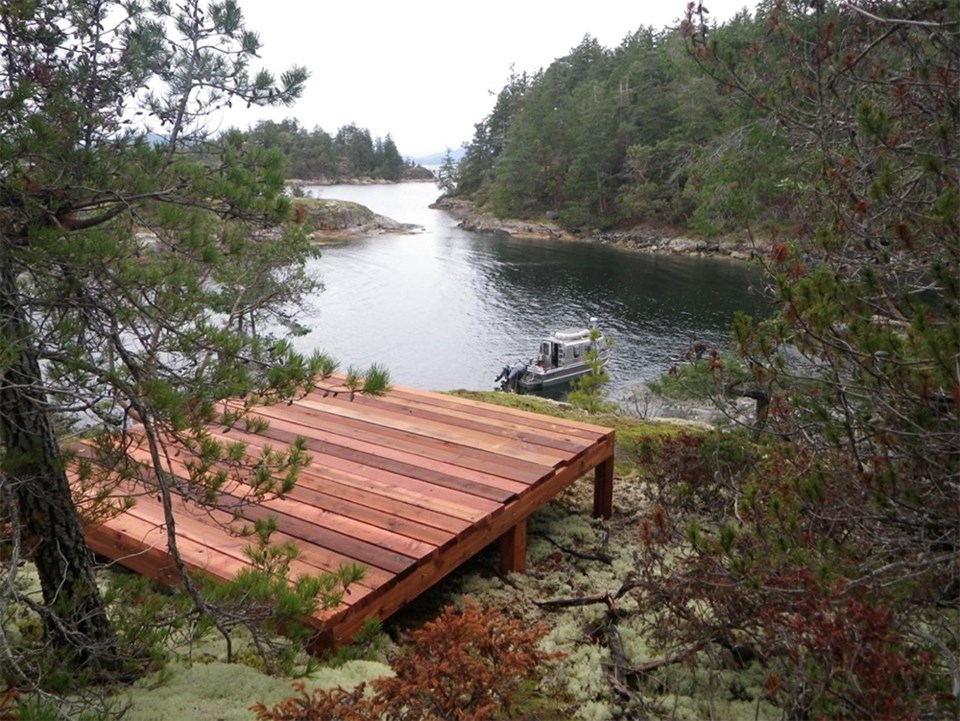Tla’amin Nation is starting work on a project to identify, protect, educate and divert visitors from vulnerable archaeological sites in Desolation Sound.
Tla’amin hegus John Hackett stated in a media release that the project is urgently needed.
“We are proud of our territory and want to continue to share this special place with visitors in responsible ways,” stated Hackett. “The fact is, 50 years and millions of visits after the establishment of the park, we continue to see the resting places of our ancestors damaged and pillaged. Since 2010 alone, eight of our burial boxes have been desecrated.”
The release stated the two-year project will include approximately 83 days of archaeological assessment and is made possible with a $500,000 investment from the provincial ministry of tourism, arts, culture and sport – destination development fund, and with additional investment from Tla’amin.
“Our government is committed to protecting culturally significant sites and supporting reconciliation in action,” stated Lana Popham, minister of tourism, arts, culture and sport. “By supporting the Tla’amin Nation through the destination development fund, we are protecting important ancestorial archaeological sites and creating a sustainable tourism industry that everyone can enjoy for years to come."
The first phase of the project includes archaeological mapping, site work, carbon dating and cataloguing of artifacts. The project team will also revisit 93 archaeological sites recorded during the establishment of the park in 1973, the oldest of which is 7,800 years old.
Tla’amin director of lands, Kwyem Tomolx Denise Smith, stated that the second and third phases of the project include essential land use planning, zoning and public education activities.
“Cataloging is just the beginning, having laws with teeth and monitoring in place will ensure our ancestors and their belongings are protected and can rest in peace,” stated Smith.
Tla’amin acknowledged BC Parks for its ongoing partnership with Tla’amin to carry out this important work and thanked Destination BC for its help in achieving the grant, the release stated.
Tla’amin executive council member Tiy’ap thote Erik Blaney stated that he recognizes and appreciates the growing interest, care and awareness that visitors bring to the territory.
“Visitor education, kiosks and wayfinding installations will be in place to move visitors away from sensitive sites,” stated Blaney. “Disturbing a burial site changes the course of a person’s life and can even impact their children and grandchildren. This work will protect both visitors and our ancestors.”
The public is encouraged to learn more about Tla’amin culture and heritage law, and report culturally significant sites by contacting Connie Graham at [email protected].
According to the release, the marine park was established in 1973 without the permission of Tla’amin and Klahoose First Nation; it was then the largest marine park in BC, and marketed as a place to explore the unspoiled beauty of the coast.
The release added that every year there are more than 250,000 visitors to Desolation Sound Marine Park, which has multiple confirmed village sites located within its boundaries where thousands of Tla’amin people lived year-round.
Tla’amin's culture and heritage law sets standards and processes for establishment, conservation, protection and management of heritage sites on its treaty lands, including public access to those sites, according to the release.



